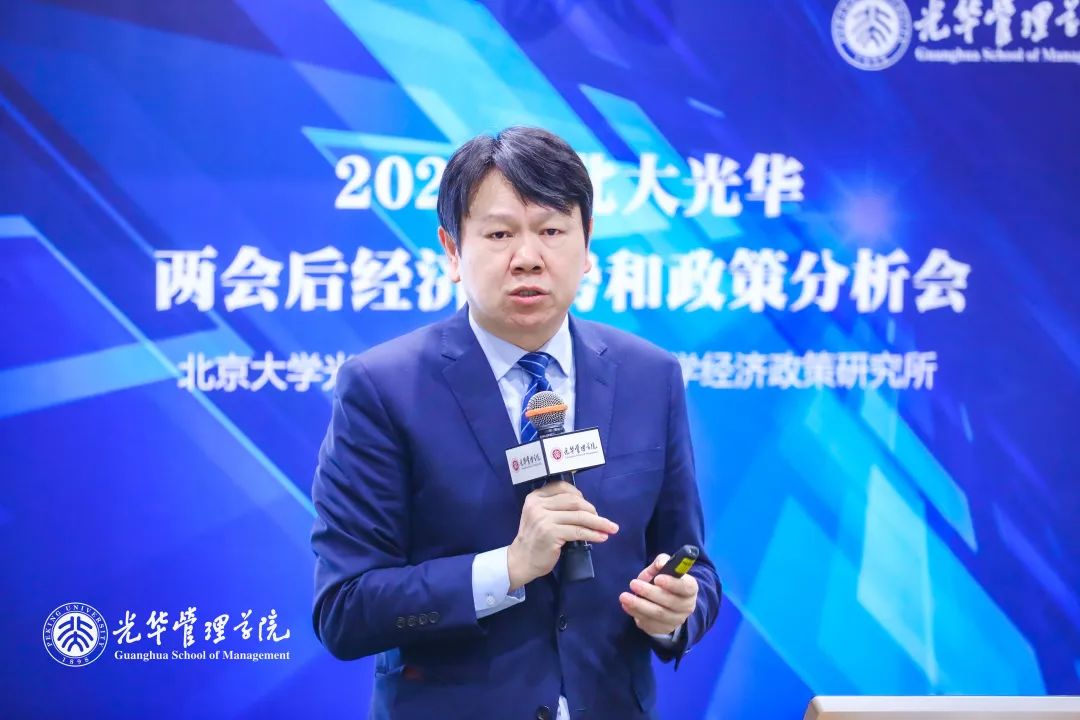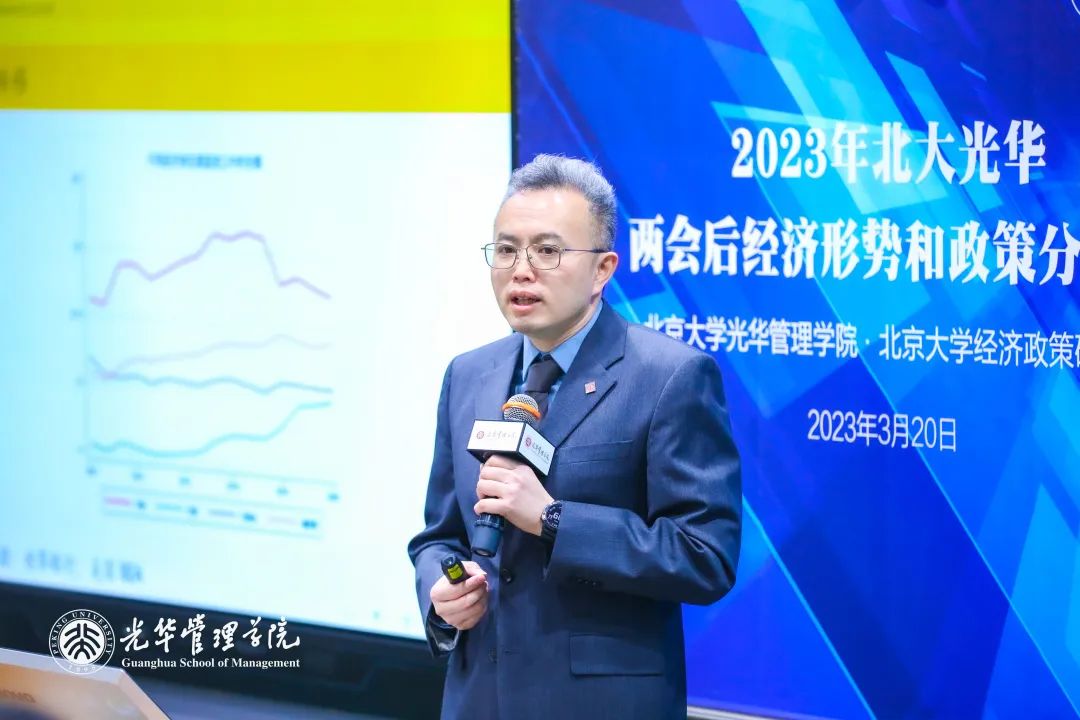2023 is the first year to fully implement the spirit of the 20th National Congress of the Communist Party of China (CPC), and also the forty-fifth year of China's reform and opening-up. The 20th CPC National Congress and the recently concluded Two Sessions have drawn a grand blueprint for China’s economic development. Embarking on a new journey, China has entered a period of strategic opportunities, where risks and challenges coexist, while uncertainties increase.
How to interpret the key points released by the Two Sessions? What will be the macroeconomic trend of China in 2023? What are the key development sectors?
To shed some light on the above-mentioned questions, professors from Peking University shared their understanding on China’s current economic situation and looked into the future of economic policy on an analysis conference held on Monday.
Here are highlights of their interpretations.
The crux of Chinese path to modernization and China's economy

Professor Liu Qiao delivers his speech. (Photo provided to People's Daily)
To comprehensively advance the great rejuvenation of the Chinese nation on all fronts through a Chinese path to modernization, it's necessary to understand the connotation and features of the Chinese path to modernization in order to address the key issues.
Chinese path to modernization calls for the high-quality development driven by the total factor productivity (TFP). Liu Qiao, professor and dean of Guanghua School of Management of Peking University, believes that China has the potential to achieve a TFP growth after completing industrialization –growing from the current level of less than 2% to 2.5% or more, through re-industrialization, new infrastructure, industrial power, carbon neutrality and improved resource allocation efficiency brought by the reform and opening-up.
Liu said that China has the condition and space to implement an active fiscal policy. The government should let the market play a decisive role in resource allocation while focusing on key industries and sectors with macroeconomic policy, so as to solve difficulties in the process of modernization.
The development space and additional value brought by the active economic policy will help stabilize the economy and stimulate the vitality of market entities in the short term, while also greatly contributing to the quality development of Chinese economy and society in the medium and long term.
Promote high-level institutional opening-up and stabilize core enterprises in the industry chain

Associate professor Tang Yao delivers his speech. (Photo provided to People's Daily)
Since the beginning of year 2023, China's economy has been on the rebound. But there are growing tensions in geopolitical and economic and trade relations. Tang Yao, associate professor at Guanghua School of Management of Peking University, analyzed that as the Federal Reserve rapidly raised interest rates, a sluggish global economy growth is expected, there are more exposed international financial risks, and the risks borne by enterprises have increased. As a result, what has emerged is a lack of increment of international economy and trade. Competition to attract direct investment will also increase in this situation.
At present, China's advantages in foreign trade and foreign capital are its complete industrial chain and huge domestic markets, but as some of the downstream-production is transferred to Southeast Asia and other places, China has to forge ahead to stabilize industrial and supply chains.
Tang suggested that China should seize the chance to promote a high-standard institutional opening-up, to construct a more stable and predictable environment for enterprises. It is essential to combine the strengths of the central government, local governments and enterprises, and to especially step up the central government's coordination.
Local governments should continue to optimize the specific policy coordination. In the context of relatively advantaged domestic policy and economic environment, enterprises should actively research and seize the opportunity to invest in domestic industrial chains. Specifically, the government should focus on large-scale enterprises at the core of the industry chain, in an attempt to construct a stable environment and upgrade institutional opening-up for major foreign and private enterprises.
Macroeconomic projection in 2023

Associate professor Yan Se delivers his speech. (Photo provided to People's Daily)
What will be the macroeconomic trend of China in 2023? Yan Se, associate professor at Guanghua School of Management and deputy director of Institute of Economic Policy Research at Peking University, made his analysis and prediction. Yan mentioned that the economic growth rate of 3.0% in 2022 is lower than the target of 5.5%, as the impact of weak consumption and negative growth in real estate investment is significant. Therefore, stabilizing growth has become the primary target in 2023. While the Two Sessions setting the GDP growth target of around 5%, local governments have generally set higher economic growth targets.
What are the signals for economic growth in 2023 so far? Analyzing the economic data for the first two months in 2023, Yan pointed out that industrial manufacturing was weaker than expected, but the service sector has recovered rapidly; pent-up demand was released and consumption has recovered better than expected; data on real estate show that it rebounded in all respects. In addition, the year-on-year decline in exports has narrowed. However, it is notable that the year-on-year growth rate of Consumer Price Index (CPI) fell due to seasonal factors after the Spring Festival, while the year-on-year growth rate of Producer Price Index (PPI) fell for five consecutive months. The risk of economic deflation is therefore a cause for alarm.
What will economic growth ultimately be like in 2023? Despite the uncertainty, Yan believed that economic growth in 2023 can still be anticipated. At the same time, he forecast the year-on-year growth rate for some economic data: GDP growth is expected to be at 5.5%, final consumption expenditure growth is expected to reach 6.8%, and a 2% decline is expected in net exports.
(The opinions of the experts reflect their personal views and are not necessarily the views of the People's Daily.)


